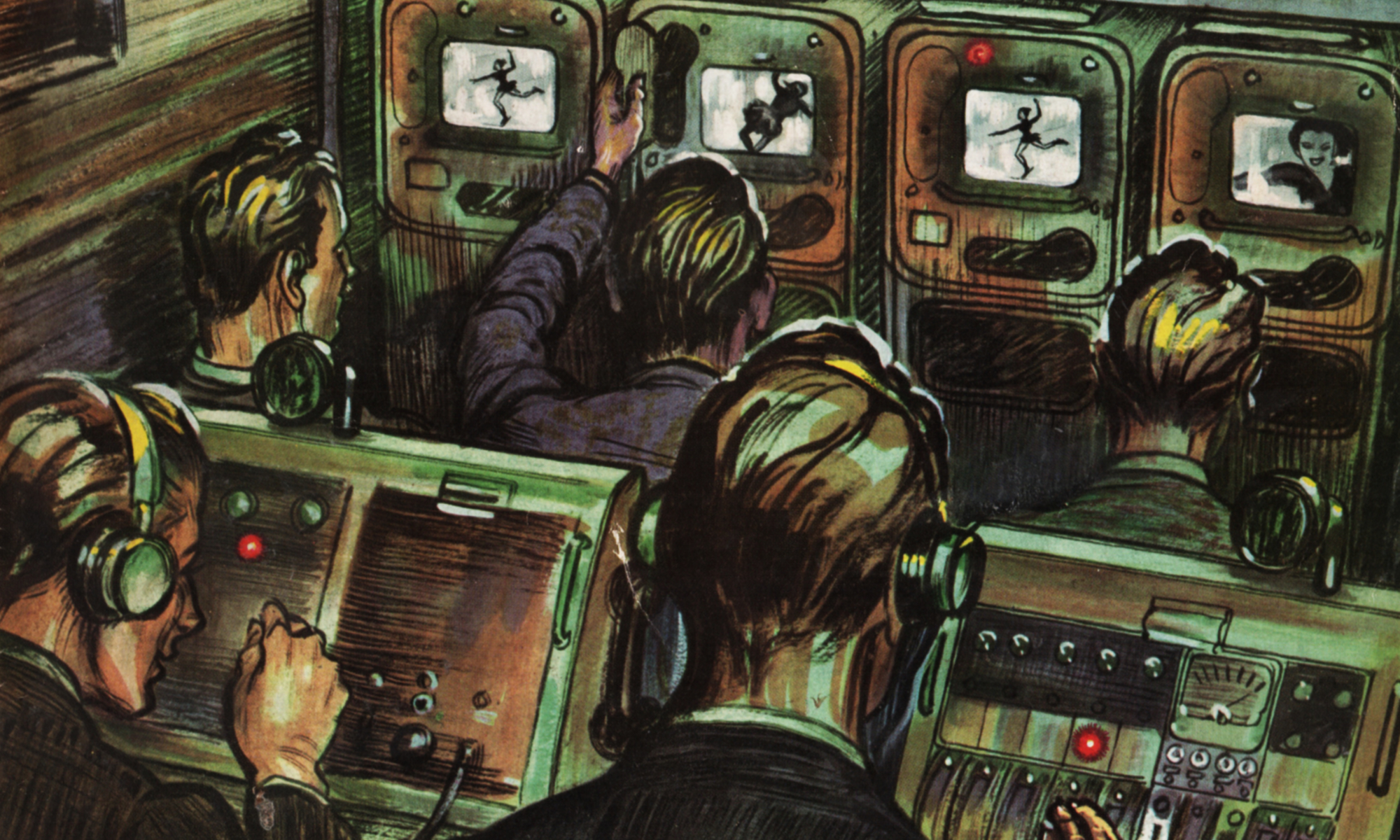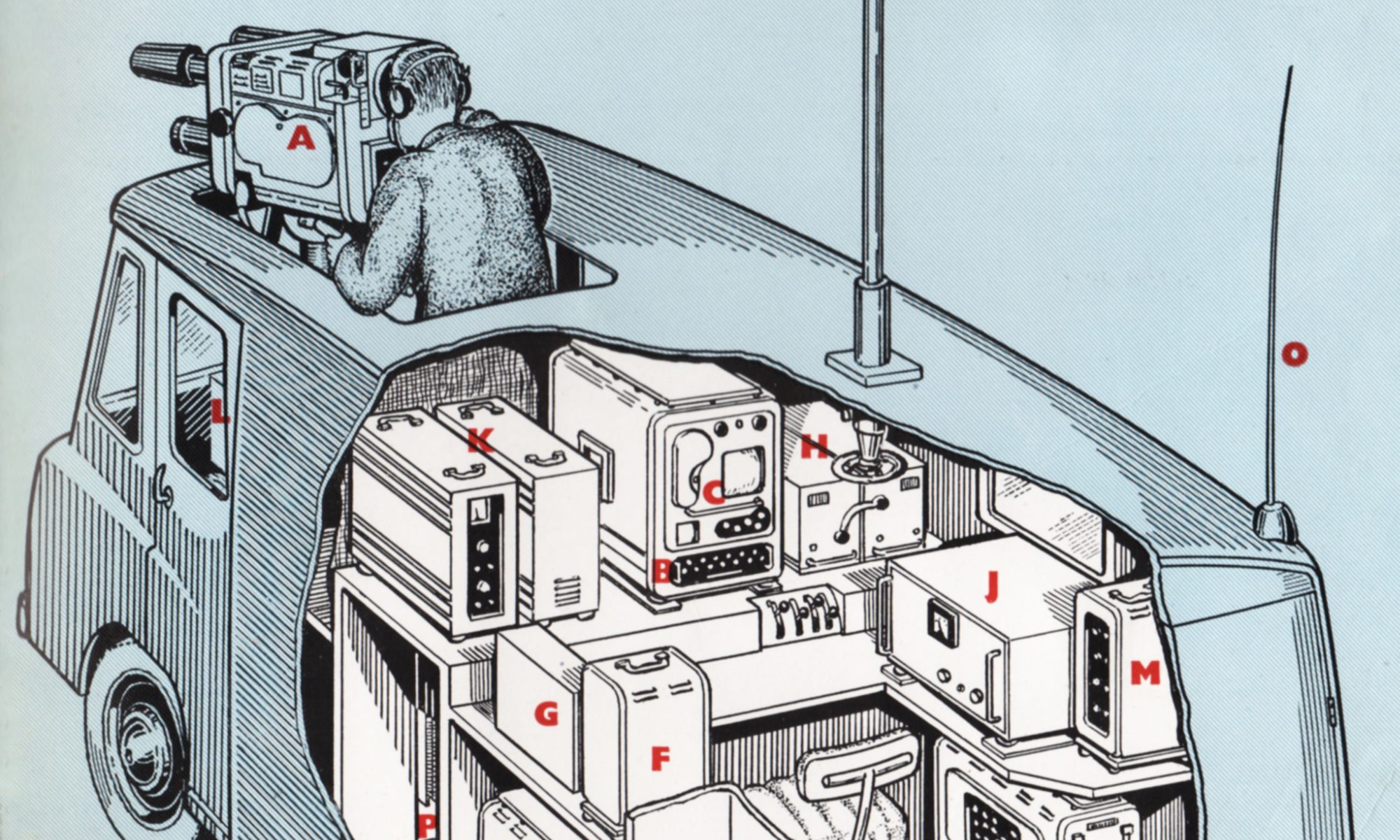A recent innovation in the world of television is the use of ‘Roving Eye’ — a truly mobile pick-up unit which is complete with camera and transmitting equipment such that a live programme can be broadcast whilst the vehicle is actually in motion. This technique has been used, with much success, by the B.B.C. and its great advantage is the ability to put a programme on the air at a moment’s notice.
The whole equipment is stowed in a 1½-ton van so that the vehicle falls into the light duty class and is not restricted by speed limitations and so on.
The layout is such that the vehicle is divided into approximately two halves, to provide a camera operating position in the forward part and a control position at the rear. The camera is mounted so that it can be raised and lowered easily whilst, at the same time, complete panning freedom is afforded. A sliding hatch in the roof permits sufficient elevation to be obtained. Room for the commentator and for a monitor is provided in front of the camera. The control compartment is neatly arranged to give the camera control operator access to all units, as required during operation, whilst seated in the operating position. As well as vision and sound programme control facilities, provision is made to regulate the motor alternator from a simple control panel.
Programme transmission back to the main studio is over a VHF link, separate transmitters being employed for sound and vision channels. A Yagi aerial array is employed for the vision link and this may be rotated when the vehicle is on the move. A 10-watt VHF transmitter/receiver provides a communication channel whilst the sound transmitter is rated at 25 watts. In both cases, a whip aerial is employed. All units are shock-mounted and draw their power supplies from a motor alternator set which is housed in a blimp, centrally positioned in the vehicle. The whole vehicle is completely self-contained. It has an operating range of up to ½-mile radius from the main pick-up point in built-up areas and approximately three miles in open country.
Mobile television in its finest sense is provided by the ‘Roving Eye’ and its greatest application is found in cities where the operating link is a short distance. The camera channel employed is of standard type so that the technical performance compares favourably with that of any outside broadcast.
Typical schedule of equipment
Representative for a standard ‘Roving Eye’ unit
| Quantity | Item | Reference |
|---|---|---|
| 1 | IMAGE ORTHICON CAMERA | A |
| 1 | CAMERA-CONTROL UNIT | B |
| 1 | PICTURE AND WAVEFORM MONITOR | C |
| 1 | REGULATED POWER SUPPLY UNIT | D |
| 1 | SYNCHRONISING GENERATOR | E |
| 1 | FOCUS SUPPLY UNIT | F |
| 1 | SOUND AMPLIFIER AND MIXER | G |
| 1 | VHF TRANSMITTER/RECEIVER | H |
| 1 | VHF SOUND TRANSMITTER | J |
| 1 | VHF VISION TRANSMITTER | K |
| 1 | COMMENTATOR'S MONITOR | L |
| 1 | COMMUNICATION UNIT | M |
| 1 | YAGI AERIAL ARRAY | N |
| 3 | VHF WHIP AERIALS | O |
| 1 | MOTOR ALTERNATOR SET | P |



